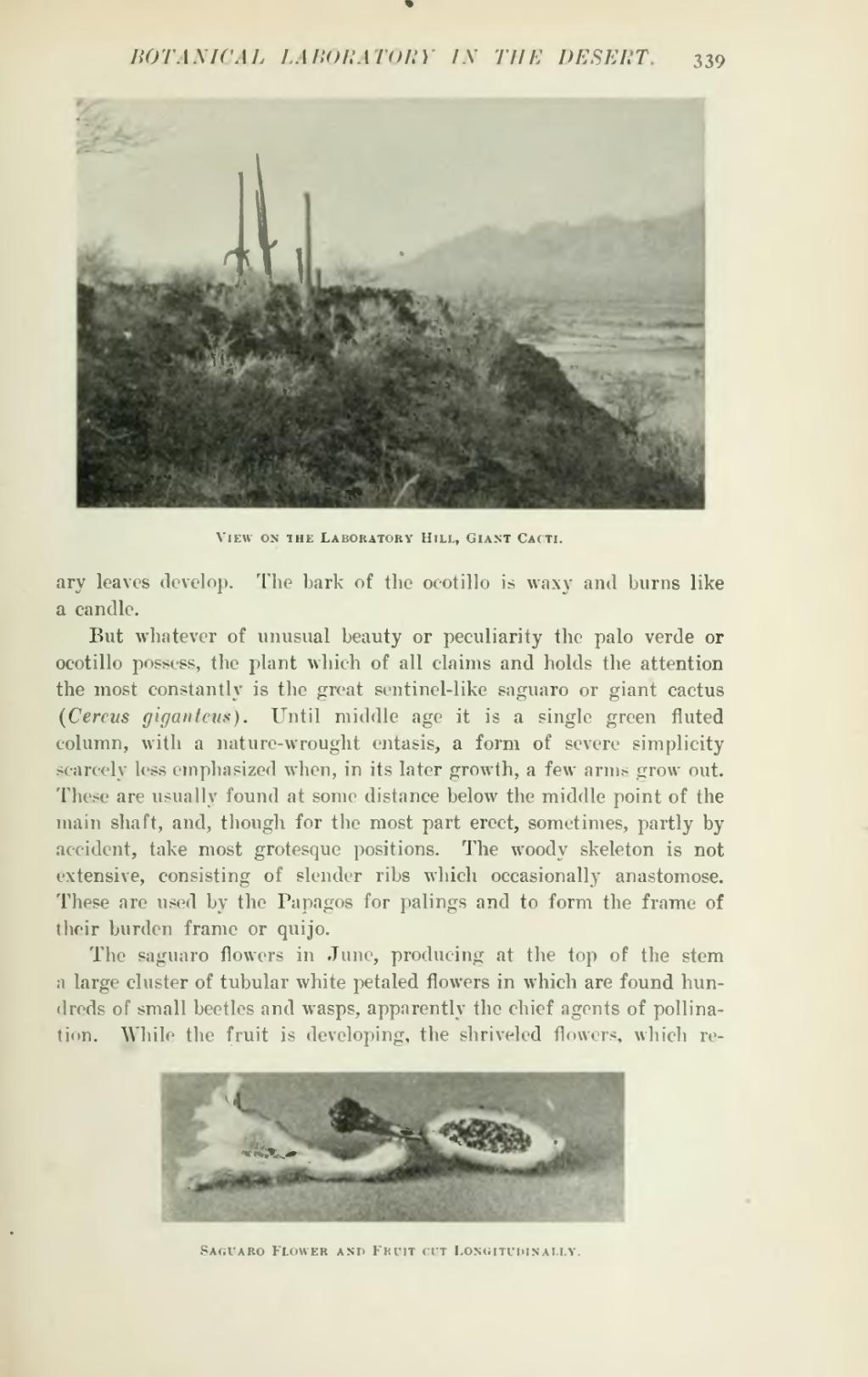hyphenated word was joined because of the intervening image.— Ineuw talk 14:42, 3 October 2013 (UTC) (Wikisource contributor note)
leaves develop. The bark of the ocotillo is waxy and burns like a candle.
But whatever of unusual beauty or peculiarity the palo verde or ocotillo possess, the plant which of all claims and holds the attention the most constantly is the great sentinel-like saguaro or giant cactus (Cereus giganteus). Until middle age it is a single green fluted column, with a nature-wrought entasis, a form of severe simplicity scarcely less emphasized when, in its later growth, a few arms grow out. These are usually found at some distance below the middle point of the main shaft, and, though for the most part erect, sometimes, partly by accident, take most grotesque positions. The woody skeleton is not extensive, consisting of slender ribs which occasionally anastomose. These are used by the Papagos for palings and to form the frame of their burden frame or quijo.
The saguaro flowers in June, producing at the top of the stem a large cluster of tubular white petaled flowers in which are found hundreds of small beetles and wasps, apparently the chief agents of pollination. While the fruit is developing, the shriveled flowers, which remain


